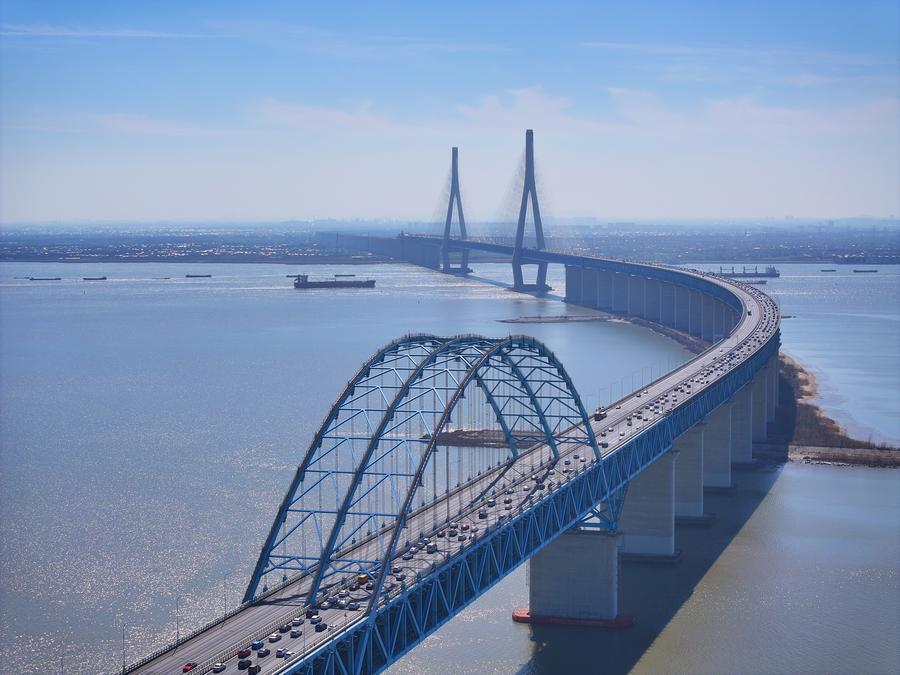
An aerial drone photo taken on Feb. 16, 2024 shows vehicles running on a road-rail bridge, which connects Suzhou and Nantong of
China's transport departments are taking measures to ensure the smooth flow of travelers as the Spring Festival holiday draws to an end.
The country is expected to see a peak in its annual travel rush on Saturday, the last day of the eight-day holiday period this year, with the rush hours estimated to fall between 2 p.m. and 6 p.m., according to the Ministry of Transport.
The ministry said that highway traffic will peak at 65.2 million vehicles, about 1.75 times the average amount during the Spring Festival travel rush. Meantime, due to the cold wave, there will be strong winds and cooling weather in most areas of the country, making road travel more difficult.
An official with the ministry said that local transport departments have taken measures to enhance road network management, emergency response, congestion relief and other work to ensure the safety and orderly travel of passengers.
In central China's Hubei Province, transport authorities guided drivers to avoid congested road sections through radio, electronic display screens and map navigation.
In order to enhance the travel experience of teachers and students returning to Shanghai, local authorities provided customized special lines to 27 university campuses from Feb. 16 to March 5, with the help of the "Mobility as a Service" platform.
Railway passenger flow also continues to rise. According to the official railway ticket-booking app 12306, the passenger flow from Beijing, Shanghai, Guangzhou, Zhengzhou and other cities is relatively large.
China Railway Shanghai Bureau Group Co., Ltd. has added 410 passenger trains between popular destinations such as Beijing-Shanghai, Guangzhou-Shenzhen, while China Railway Zhengzhou Bureau Group Co., Ltd. has been operating 56 high-speed trains at night.
In the south of the country, the Qiongzhou Strait has also been welcoming the peak of Spring Festival return travel.
In order to meet passenger demand for sea crossings, the maritime department has guided operating enterprises to improve the efficiency of ship turnover to meet transport demand to the greatest extent.

